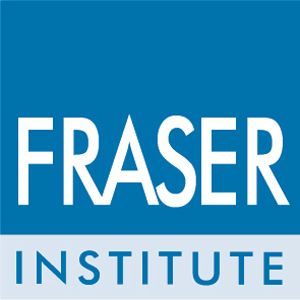Supply management an antiquated way to sell milk, chickens, eggs and cheese
by Jason Clemens and Alana Wilson, The Fraser Institute
There are few Canadians who understand agricultural supply management and how it affects their daily lives, which is a major reason why this outdated system has survived. It’s receiving greater scrutiny now, though, because it’s impeding trade agreements.
Canada has a real opportunity to advance our trade relations, ease the cost of living for lower-income Canadians, and generally improve the efficiency of the Canadian agricultural sector by eliminating supply management. But the path towards these benefits requires us to understand the costs of supply management and how best to free ourselves from it.
Supply management is a government-imposed system of licenses and quotas that limits the number of producers and their production (and thus sales) of agricultural products such as milk, chickens, eggs, and cheese. The government also imposes tariffs (i.e. taxes) on foreign products to ensure that they can’t provide cheaper alternatives.
In this way, the government controls both domestic and foreign supply in order to guarantee Canadian farmers higher prices than they would otherwise receive.
But these higher prices are not evenly distributed across all families. One of the most disturbing aspects of supply management is that low-income families disproportionately bear the additional costs because basic food items – milk, cheese, etc.— consume a larger share of their income compared to higher-income households.
For example, a recent study concluded that roughly 24 per cent of the income earned by low-income families is spent on food compared to just six per cent for higher-income families.
Consequently, the benefits accorded farmers through supply management’s higher prices comes largely at the expense of low-income families.
Compounding this rather egregious income transfer is that Canada’s successful completion of new trade agreements is being jeopardized. For example, the trade deal with the European Union (CETA) could be completed shortly and would provide Canada preferential market access to the EU’s 27 member states and 500 million consumers, however its completion hinges on Canada accepting more EU dairy imports, according to EU ambassador Matthias Brinkmann.
Another critical trade agreement, the Trans-Pacific Partnership (TPP), is also being impeded by supply management.
Australia, which is already in the process of joining the TPP, went through a difficult period to eliminate its own supply management. Not surprisingly, it is demanding that Canada also undo supply management as a condition of entering TPP.
The opportunities from joining the TPP are enormous, both today as well as in the future. While the TPP started in 2005 with just Brunei, Singapore, New Zealand, and Chile, other countries –including Australia, Peru, Vietnam, Malaysia, the United States, Japan and China – are either in the process of joining or considering joining. If those who have expressed interest join the TPP, it will represent a free trade zone of over 2.5 billion people (i.e. potential customers) with GDP in excess of $35 trillion.
Given the costs of supply management and the increasing recognition that it should be eliminated, the question becomes how can we undo it without violating the legitimate property rights of farmers who purchased quotas?
Some of the answer lies in understanding how Australia extricated itself from its own supply management. While not perfect, there are lessons worth considering. Australia imposed a quasi-tax on regulated products like milk for a specified period of time (eight years). The tax on regulated products meant that even though the market was opened up for competition, consumers did not fully benefit from the lower market price for eight years. The proceeds of the tax were used to support farmers during the transition.
While supplementing income doesn’t make sense because it impedes reform and adjustment, in this case, the Australia tax provides a framework to compensate Canadian farmers for the loss of property through the elimination of quotas.
Compensation of farmers would have to be adjusted for the length of time the quota was owned.
Specifically, the longer a farmer owned a quota, the lower the compensation, if any, since the farmer would have enjoyed higher prices for their products, which compensates them for the purchase of the quota. More recent purchasers of quotas should be compensated to a greater degree as they would not have enjoyed the higher prices long enough to compensate for the initial cost of the quota.
Eliminating supply management would provide enormous, meaningful gains for Canada starting with reduced prices for basic foods for low-income households, improved efficiency in some agricultural sectors, and the removal of barriers to critically important trade agreements.
With so much to gain, there’s little reason to maintain this outdated system of pricing milk, chickens, eggs and cheese.
Jason Clemens and Alana Wilson are economists with the Fraser Institute (www.fraserinstitute.org).

























